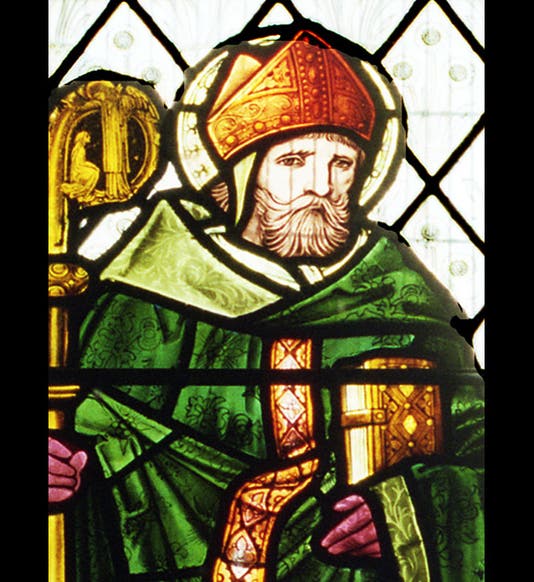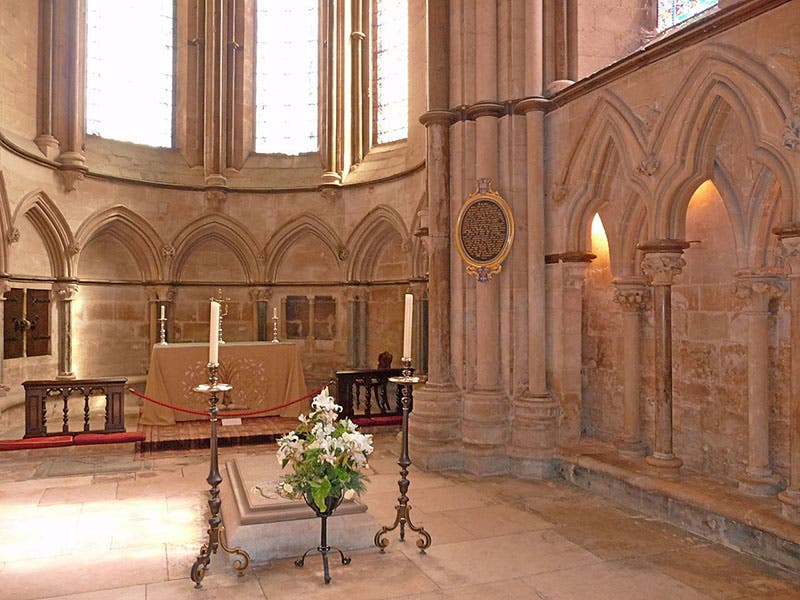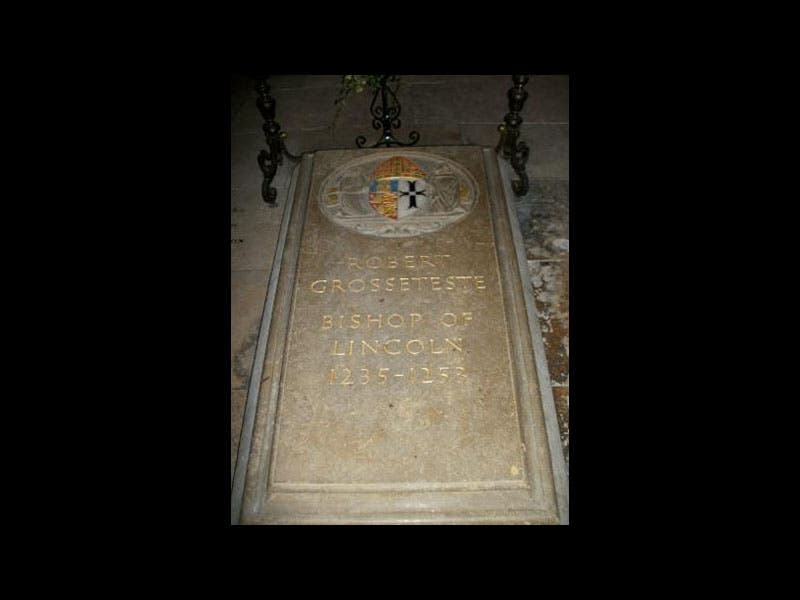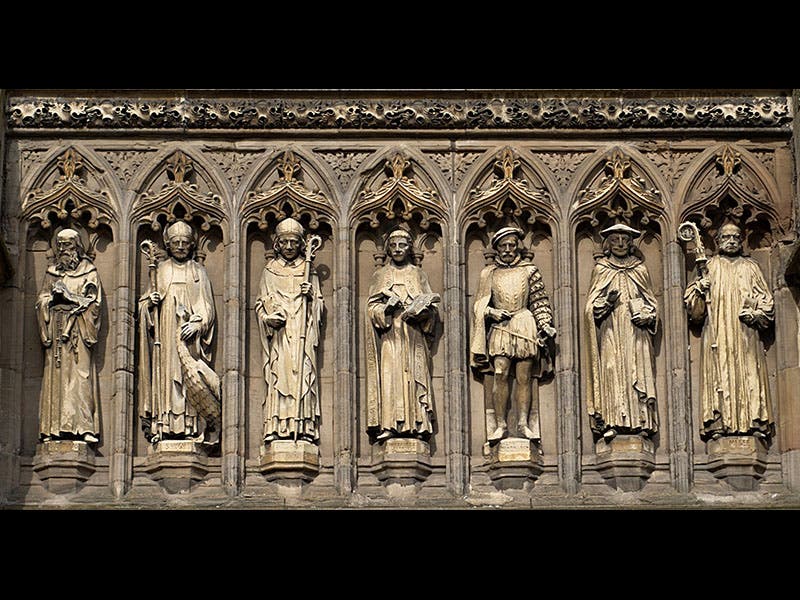Scientist of the Day - Robert Grosseteste
Robert Grosseteste, a medieval English scholastic philosopher, died Oct. 9, 1253, at the age of around 75. Grosseteste taught for some years at Oxford, until, in 1235, he was appointed Bishop of Lincoln, an ecclesiastical post he would hold until his death. In the history of science, Grosseteste is noted for two achievements. The first is his important contribution to what we now call the "metaphysics of light." The idea that light is a very special entity, a creative force, goes back to the post-Christian Neoplatonists, such as Plotinus, and to Augustine. Grosseteste was well versed in Augustinian and Neoplatonic light metaphysics, and in his own treatise on light, De Luce, Grosseteste attempted to interpret the account of creation in Genesis by treating light as a first form that gave body to a dimensionless first matter. From an initial point, light instantly filled the universe, drawing matter with it, and then reflected back to create the celestial spheres and finally the impure elemental world. Grosseteste's "Neoplatonic Aristotelianism" inspired Roger Bacon and Bonaventure to join the ranks of those who gave light special status in the order of things. And this is important because we now know that Johannes Kepler, the founder of modern optics, was profoundly influenced by Grosseteste and medieval light metaphysics, and that his studies of the propagation of light were a direct result of his belief that light is a divine creative force.
Grosseteste is also sometimes fingered as the father of western experimental science, because of his proposal that to discover if A causes B, we need to do a series of controlled experiments, in some of which A is present, and in some of which A is absent. The claim that Grosseteste was a founder of the experimental method was most notably made by Alistair Crombie in a book, Robert Grosseteste and the Origins of Experimental Science 1100–1700 (1953). But since Grosseteste only mentioned his controlled experiment once, and never actually did such an experiment, nor did he incorporate experimentation into his writings on scientific method, most scholars since have rejected Crombie’s claim, or toned it down considerably. We still find it interesting that Grosseteste made such a suggestion, even if he only did so once, but we are reluctant to trace the experimental science of the 17th century directly back to Grosseteste.
Grosseteste was buried in Lincoln Cathedral, and his tomb and memorial slab are visible to the public (second and third images). Several attempts were made after Grosseteste’s death to procur his sainthood, but they were not successful. There is a stained-glass window portrait in St. Paul's Church in Morton by Gainsborough, near Lincoln (first image), and a statue carved above a porch of Leicester Cathedral, where Grosseteste served before going to Lincoln (fourth image). Grosseteste is the third from the left, between St. Hugh of Lincoln and John Wycliffe.
Dr. William B. Ashworth, Jr., Consultant for the History of Science, Linda Hall Library and Associate Professor, Department of History, University of Missouri-Kansas City. Comments or corrections are welcome; please direct to ashworthw@umkc.edu.










